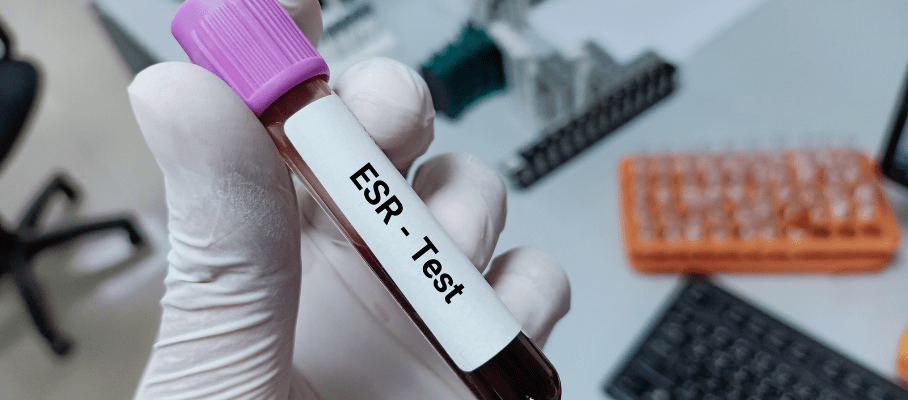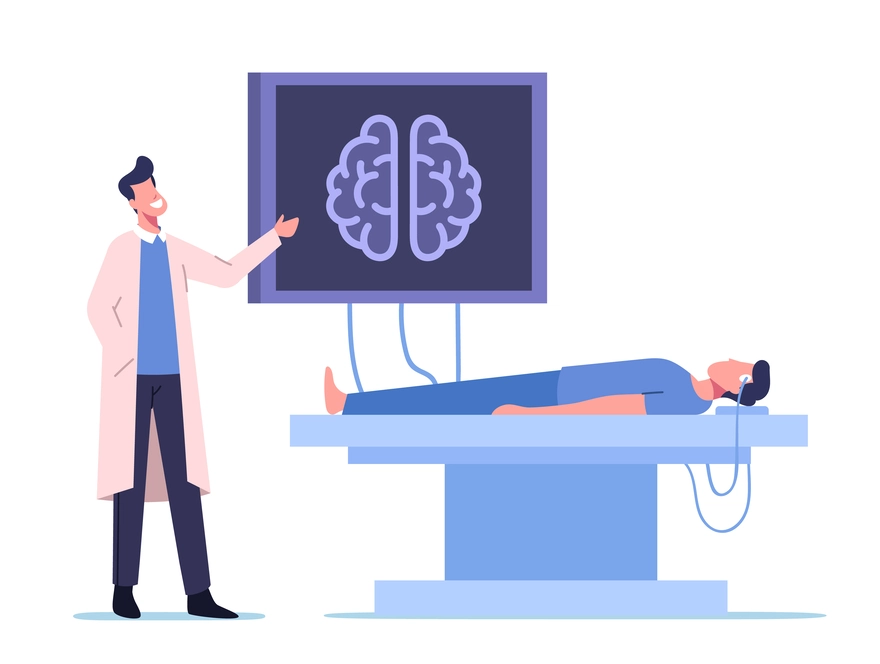Preventive Healthcare
Pelvic Pain: Common Causes, Symptoms, and Treatment Options

Table of Contents
Have you ever felt discomfort or pain in the lower part of your abdomen? Pelvic pain is a common issue that affects both men and women and can range from mild discomfort to severe pain that disrupts daily life. While occasional pain is normal, persistent or severe pelvic pain can indicate an underlying health condition.
When you are aware of the causes, symptoms, and treatment options, it can help you manage and alleviate your discomfort. With our guidance, let us help you out with the possible reasons behind pelvic pain, how it is diagnosed, and the best ways to treat and prevent it.
What is Pelvic Pain?
Pelvic pain refers to discomfort in the lower part of your abdomen, between the belly button and the groin. The pain may be sharp, dull, intermittent, or constant. It can be acute (short-term) or chronic (lasting more than six months).
While it is more common in women, men can also experience pelvic pain due to various medical conditions. The pain may be related to the reproductive system, urinary tract, digestive organs, or musculoskeletal structures in the pelvic region.
What Causes Pelvic Pain?
Pelvic pain can stem from multiple sources, ranging from digestive issues to reproductive conditions. Being familiar with the pelvic pain causes can help in determining the right treatment approach.
Common Pelvic Pain Causes
- Gynaecological Conditions – Women often experience pelvic pain due to issues related to the reproductive system, such as endometriosis, ovarian cysts, fibroids, or pelvic inflammatory disease (PID). These conditions may cause pain during menstruation, intercourse, or daily activities.
- Pelvic Pain in Pregnancy – Some women experience pelvic pain in pregnancy due to the stretching of ligaments, pressure from the growing baby, or conditions like symphysis pubis dysfunction (SPD). While mild pain is common, severe or persistent pain should be evaluated by a doctor.
- Urinary Tract Infections (UTIs) – A UTI can cause pelvic pain, burning sensation while urinating, frequent urination, and cloudy or strong-smelling urine.
- Irritable Bowel Syndrome (IBS) and Digestive Issues – IBS, constipation, or inflammatory bowel disease (IBD) can lead to pelvic pain, bloating, and changes in bowel habits.
- Sexually Transmitted Infections (STIs) – STIs like chlamydia and gonorrhoea can cause pelvic pain, unusual discharge, and painful urination.
- Musculoskeletal Issues – Conditions like hernias, nerve damage, or pelvic floor dysfunction can contribute to chronic pelvic pain.
- Serious Conditions – Appendicitis, kidney stones, and certain cancers (such as ovarian or prostate cancer) may present with pelvic pain as a symptom.
What are the Symptoms of Pelvic Pain?
The pelvic pain symptoms can vary based on the underlying cause. Some people experience sharp pain, while others may have a dull ache or pressure.
Common Pelvic Pain Symptoms
- Sharp, stabbing, or burning pain – Some people describe pelvic pain as a sudden, intense sensation, often linked to infections, kidney stones, or nerve issues.
- Cramping or throbbing pain – This type of pain is often associated with menstrual cramps, endometriosis, or digestive issues like IBS.
- Pain during specific activities – Some individuals experience pelvic pain when exercising, having sex, or urinating. This could indicate conditions like interstitial cystitis, STIs, or musculoskeletal disorders.
- Pressure or heaviness in the pelvis – A constant dull ache or sensation of fullness in the pelvic area may be due to fibroids, ovarian cysts, or chronic pelvic inflammatory disease.
- Pain accompanied by digestive or urinary symptoms – If pelvic pain is paired with bloating, changes in bowel habits, or burning during urination, it may indicate a gastrointestinal or urinary tract issue.
How is Pelvic Pain Diagnosed?
Diagnosing pelvic pain requires a thorough evaluation, including medical history, physical exams, and diagnostic tests.
Methods of Diagnosing Pelvic Pain
- Medical History and Symptom Review – Your doctor will ask about the nature, severity, and duration of your pain, along with any associated symptoms.
- Physical Examination – A pelvic exam (for women) or a rectal exam may be conducted to check for abnormalities in the reproductive or gastrointestinal organs.
- Laboratory Tests – Blood tests, urine tests, and STI screenings help rule out infections or inflammatory conditions.
- Imaging Tests – Ultrasound, CT scans, or MRIs provide detailed images of pelvic structures, identifying cysts, fibroids, or other abnormalities.
- Laparoscopy – In some cases, a minimally invasive procedure called laparoscopy may be performed to examine the pelvic organs more closely, especially for conditions like endometriosis.
How is Pelvic Pain Treated?
The best pelvic pain treatment depends on the underlying cause. Some cases require medication, while others benefit from lifestyle changes or physical therapy.
Pelvic Pain Treatment Options
- Pain Relievers – Over-the-counter painkillers like ibuprofen or paracetamol can help manage mild pelvic pain.
- Antibiotics – If an infection is causing the pain, antibiotics may be prescribed to eliminate bacterial infections like UTIs or STIs.
- Hormonal Treatments – For conditions like endometriosis or fibroids, hormonal therapies (such as birth control pills) can help regulate hormone levels and reduce pain.
- Physical Therapy – Pelvic floor exercises, guided by a physiotherapist, can help relieve pain related to muscle tension or dysfunction.
- Surgery – In severe cases, surgery may be necessary to remove cysts, fibroids, or address structural abnormalities.
How Can We Treat Pelvic Pain At Home?
While medical treatment is often necessary, certain home remedies can help alleviate discomfort.
- Applying Heat – Using a heating pad or warm bath can relax muscles and reduce cramping.
- Hydration and Diet – Drinking plenty of water and maintaining a fibre-rich diet can prevent constipation and support digestive health.
- Stress Management – Practicing relaxation techniques like yoga or meditation can help relieve tension-related pelvic pain.
- Pelvic Floor Exercises – Strengthening pelvic muscles can improve stability and reduce pain.
How Can Pelvic Pain Be Prevented?
While not all cases of pelvic pain can be avoided, adopting healthy lifestyle habits can reduce the risk of developing it. Prevention strategies focus on maintaining overall pelvic health and addressing risk factors early.
- Eat a Balanced Diet – A fibre-rich diet supports digestive health and prevents constipation, a common cause of pelvic pain.
- Practice Safe Sex – Using protection lowers the risk of sexually transmitted infections (STIs).
- Stay Active – Regular exercise improves circulation and strengthens pelvic muscles.
- Manage Stress – Practicing relaxation techniques helps reduce tension-related pelvic pain.
- Maintain Good Posture – Proper posture reduces unnecessary strain on pelvic muscles.
When To See A Doctor?
Mild pelvic pain is often manageable at home, but persistent, severe, or unusual symptoms require medical attention. Seeking timely care can help diagnose underlying conditions early.
- Pain lasts longer than a few weeks or worsens over time.
- Severe or sudden pelvic pain, especially with fever or nausea.
- Unusual vaginal bleeding, discharge, or pain during sex.
- Pain accompanied by difficulty urinating or bowel changes.
- Any unexplained discomfort during pregnancy should be evaluated.
- Weight loss, bloating, or feeling full quickly without reason.
If you experience any of these symptoms, consult a doctor for proper diagnosis and treatment.
Conclusion
Pelvic pain is a common issue that can arise from various causes, including infections, reproductive conditions, and digestive disorders. While occasional discomfort is normal, persistent pain should not be ignored. Recognising pelvic pain symptoms early and seeking appropriate pelvic pain treatment can help prevent complications. Pelvic pain in women is particularly common due to hormonal and reproductive factors.
For accurate diagnosis and reliable testing, Metropolis Healthcare offers quality diagnostic services. With a strong reputation in pathology, they provide precise and timely reports, helping you take control of your health with confidence.
FAQs
How does pelvic pain go away?
Pelvic pain may go away with rest, painkillers, heat therapy, physiotherapy, or medical treatments, depending on the underlying cause.
What can I drink to stop pelvic pain?
Warm herbal teas, ginger tea, turmeric milk, or plenty of water can help reduce inflammation and ease mild pelvic pain.
Is walking good for pelvic pain?
Yes, gentle walking improves circulation, reduces muscle tension, and can help relieve some types of pelvic pain with regular movement.
Which side is pelvic pain?
Pelvic pain can occur on the left, right, or centre, depending on the cause, affecting organs like ovaries, bladder, or intestines.
What is pelvic pain a sign of?
Pelvic pain can signal infections, reproductive issues, digestive disorders, muscle strain, or serious conditions like endometriosis or kidney stones.
How do you know if pelvic pain is serious?
If pelvic pain is severe, persistent, sudden, or accompanied by fever, bleeding, nausea, or difficulty urinating, seek medical attention immediately.
When should we be concerned about pelvic pain?
Be concerned if pelvic pain worsens, lasts weeks, affects daily activities, or occurs with unusual symptoms like bloating, weight loss, or fever



































